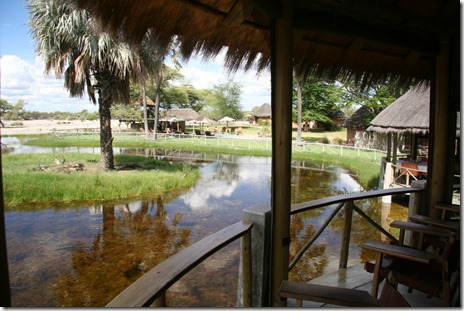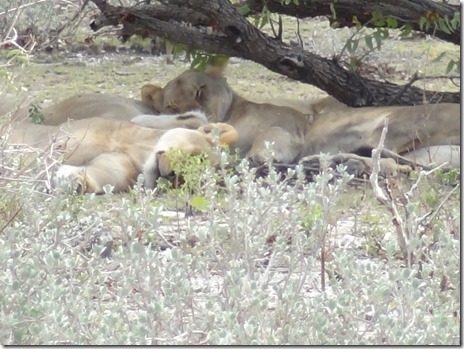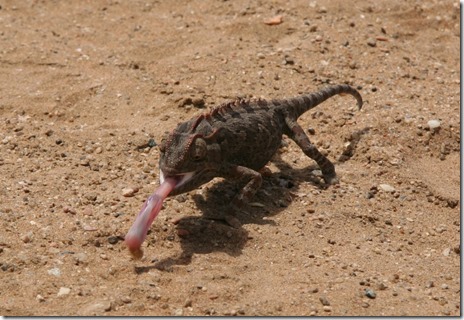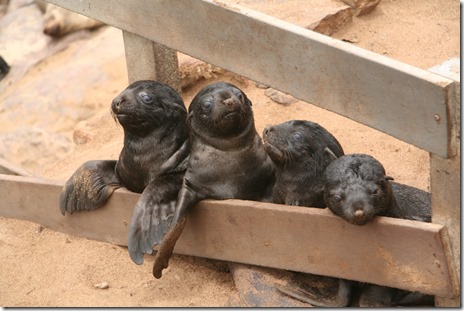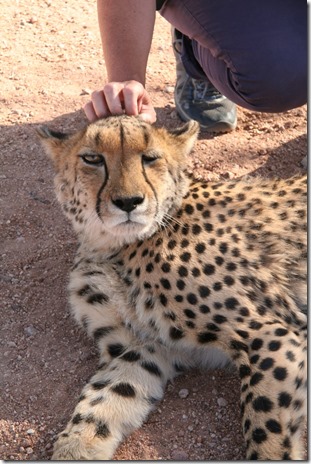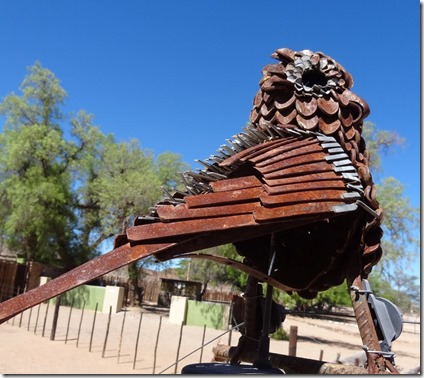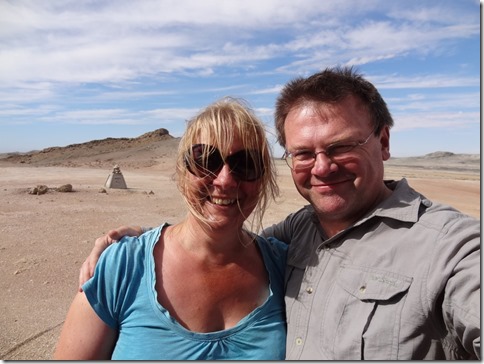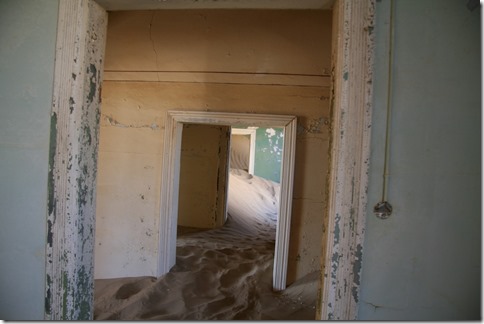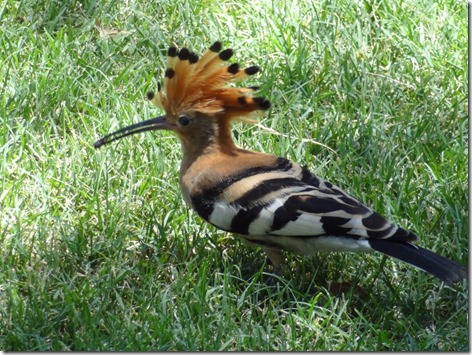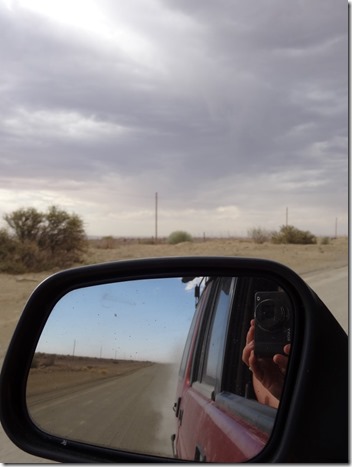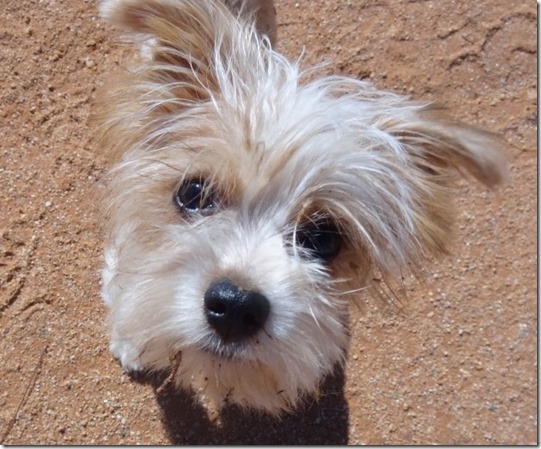We had a lazy start to Christmas morning, given the stress of the previous few days. A ‘respectable’ time out of bed was followed by bacon and eggs cooked on the Trangia. We Face-timed some of the family (something very new to us ludites) and made arrangements to catch up with others later. After lunch we headed out of the small game reserve surrounding the lodge to make our first visit into Etosha itself. It was an unpromising start. At the gate the usual police presence had been joined by the anti-poaching squad who were checking everyone coming through. Poaching has become a real problem in Etosha, particularly for rhino as their horn is highly (and illegally) sought after in China. In October there was a shoot out with poachers, two of whom were killed. The other three fled into the park where they are believed to have died. Anti-poaching officers put their lives on the line as part of their job. It’s deadly serious. At the gate we were approached by one of them. “Hello. How are you?” he asked with no warmth in his voice. “Very well thanks, how are you? Happy Christmas!”. It obviously wasn’t. “Where are you from?”. “The UK”. “Do you have any weapons in the car? Any pistols or rifles?” The question came as a bit of a surprise as that’s the last thing we were going to carry into the park. “Err, no.” He pointed to the glove box and asked us to open it which we did. “You don’t have any pistols or rifles in there?” he asked sternly. Obviously we didn’t and in the spirit of Christmas and trying to be light-hearted Angela replied “No, they’re in the back”.
The words were out before she had a chance to think about it. Gareth cringed. In the words of Del Boy, what a prize plonker. Like joking about a having a bomb at the airport check-in. “You have guns in the back?” “No, sorry I was just kidding. We don’t have any guns”. “Open the back of the car”. He had a fairly cursory inspection of the sides and the back (fortunately missing the anti-baboon catapult which we’d bought to stave off the camp site terrorists and which we’d forgotten was on board). Opening a drawer he called over a colleague. We had eggs in it. The colleague took over. “You can take eggs and meat in but you can’t bring them out”. We knew this applied to red meat and had temporarily off-loaded some mutton into the fridge of some friendly American camper neighbours. But we’d left the eggs and two meals-worth of chicken in the fridge/freezer. We could have gone back to remove the chicken as well but it wouldn’t have been worth going back in to the park so we returned to the campsite a bit dispirited and got out the Christmas sparkling wine instead. As you do.
We had a fantastic meal in the restaurant, with turkey, beef, sausage, and an interesting mix of melie pap and veg, followed by pudding with lashings and lashings of custard. Yum. It was a really nice evening. We took the dangerous gamble of booking a game drive for 6.30am the following morning so we restricted our wine intake and had a fairly early night.
The guide started off by telling us that we had chosen a bad time of year for game viewing. As there had been rain the animals weren’t coming to the water hole. He was basically telling us not to expect to see anything. But Angela had put her lucky bracelet on. She’d bought it last year and was wearing it when we’d had a fantastic encounter with a leopard and seen lions hunting zebra – obviously the bracelet was lucky. We headed off. Within 10 minutes, before we’d even left the private reserve, we had two cheetahs, a mother and cub, next to us on the road.
Cheetah mum and cub
We entered the park and five minutes later saw a leopard, albeit briefly, in the bush. Next was a black rhino, one of the most endangered animals on the planet. We followed that with three cheetahs feeding on a recent kill. Then another one. To top it all we watched a big bull elephant marching down the ‘shore’ of the pan. He stopped at a small pool, had a drink and then proceeded to dig into it with his feet to muddy the water and create his own personal wallow. He splashed and wriggled around in the mud, getting as much over him as he could. It was magic. Hope you enjoy the pics as much as we enjoyed watching him.
Mud, mud, glorious mud….
Nothing quite like it for cooling the blood…
Perhaps the highlight (and lowlight) of the tour was when the tour truck nearly hit a guinea fowl. One of the other ladies gasped in horror as the bird dashed out right in front of the car. Angela sighed with disappointment when it flew out the other side. So close and yet so far.
We were obviously very disappointed by our game drive so retreated to the bar for sustenance and to catch up on our blog which was very behind. Our surroundings weren’t too shabby.
The ‘lounge’
The view. Life’s tough on the road…
We’d wanted to see an African thunderstorm and half way through our second beer it happened. It absolutely bucketed down. There was nothing for it. Our firewood would be wet and our campsite soaked, probably under water. We were forced to spend a second night in the restaurant. It was a hardship. Oryx steak with blueberry sauce, chicken with mushroom sauce. Lemon mousse, brandy. Well, what else could we do?
The following day we headed into the park on our own. We’d managed to book a night camping at Okaukuejo, the camp in the middle of the park. We didn’t see any of the big five but we saw lots of antelope, zebra and birds including the rare and beautiful blue crane.
My little pony?
The graceful blue crane
But as we approached the camp the weather deteriorated until we were driving through pouring rain and driving sand. We’d only washed the car the day before and now it was caked again!
The weather doesn’t look good for camping tonight…
This really was the view out of the windscreen
The camp site was partially flooded but fortunately our pitch was ok. The wind roared through the camp and dense black clouds threatened an imminent downpour to wash away our braai and our dinner with it. But thankfully it passed us by.
Now just where should we put the tent?
Our neighbours were a colony of sociable weavers. These sparrow-like birds build huge structures in which they each have a nest.You see them everywhere, on trees and telegraph poles. They can be big enough to break large branches off the tree. They’re very chatty birds but they shut up at night (guinea fowl take heed) and we’ve got quite fond of them.
Sociable weaver nest
Underside of nest showing entry to individual nests
A sociable weaver couple in their nest
Our last day in Etosha was spent hunting for the elusive animals. We asked a guide if he had seen anything. “Only six lions”. ONLY SIX LIONS?! Where? He told us where to find them and sure enough, there they were, snuggled up underneath a tree about 30 metres from the road. Like the males we’d seen in Kgalagadi, they looked so happy snuggled up with each other, despite the heat. One was on her back, legs akimbo, sound asleep. They were still there at 4pm when we left the park. If only we slept that well ![]()
Not a great pic but just look how cosy they are
We saw one of our favourite antelope, the kudu. A beautiful animal. We’ve heard from two different sources that the male can jump a 3 metre fence from a stand still. 3 metres. Just think about that…
Kudu – masters of the puissance
At our lunch stop we also found a less cuddly but differently beautiful animal that had popped out of his burrow to see what was going on.
It don’t mean a thing if it ain’t got that sting…
Finally we found two more elephants. Another solitary bull giving himself a coat of natural sun-tan lotion at a muddy waterhole and this one:
An elephant shrew! ![]()
And because you can never have too many pictures of an elephant shrew:
Angela was almost more happy to see this than the elephants. We coaxed him into the car and he is now travelling with us. He sits on the dash board watching the world and the wildlife go by, and then he curls up on Angela’s lap and falls asleep, his long little nose twitching contentedly. In Angela’s dreams anyway.
A belated Merry Christmas and a happy New Year everybody…
…and no, we will never wear these hats again.









